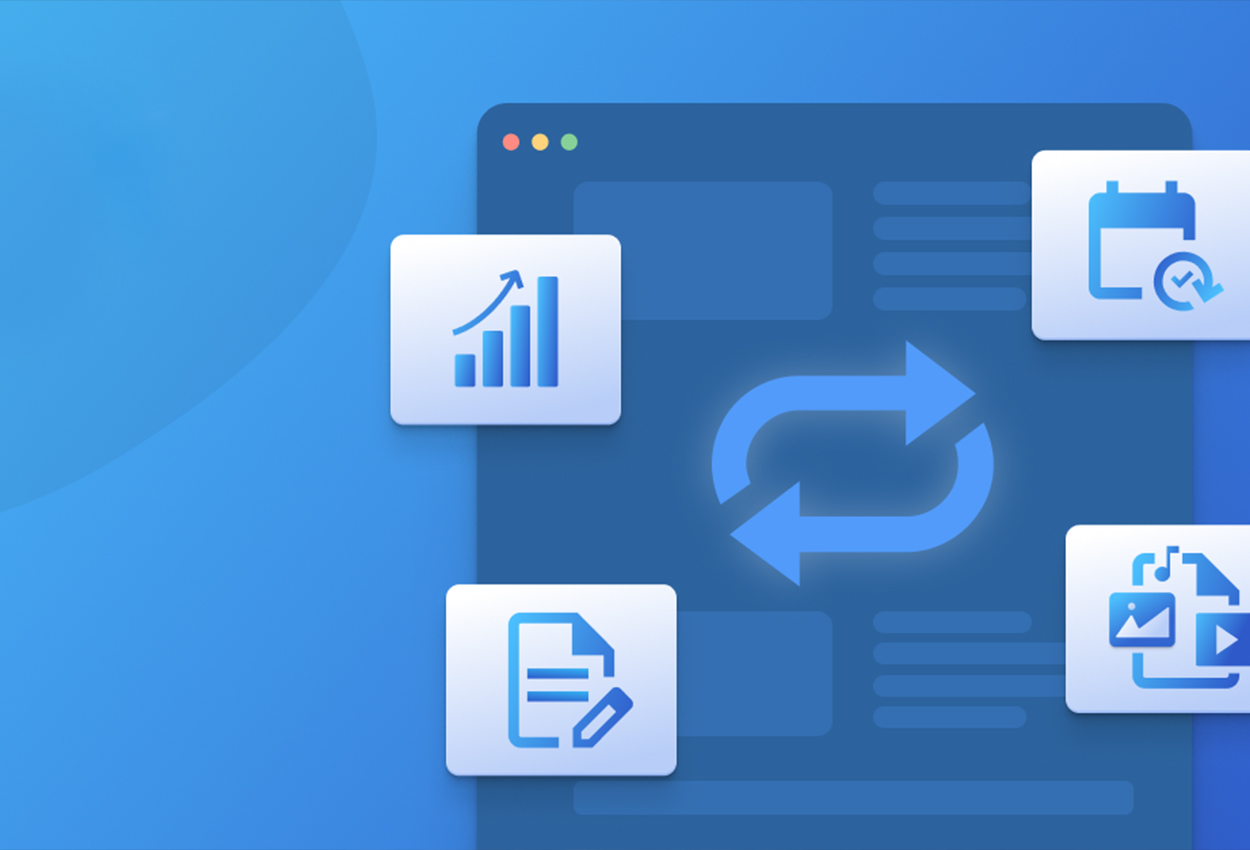

Think of your website as a living, breathing entity that needs regular care to stay vibrant and engaging. Just like a shop window that needs refreshing to attract passers-by, your website content requires periodic updates to maintain its appeal and effectiveness. In a digital world where trends and user preferences evolve rapidly, keeping your content fresh is crucial for capturing attention and sustaining engagement. In this blog post, we'll explore dynamic strategies for content refreshing, including innovative ways to update website content, utilize evergreen content, and conduct thorough content audits. Let's dive into how you can keep your site relevant and captivating for your audience!
Content refreshing is essential for several reasons:
Relevance: As time passes, the relevance of your content can diminish. Trends, technologies, and user interests evolve, making older content less applicable. Regularly refreshing content ensures that it continues to meet the needs of your audience.
SEO Benefits: Search engines favor up-to-date content. By updating website content, you signal to search engines that your website is active. This can potentially boost your search rankings.
User Experience: Fresh content enhances the user experience by providing up-to-date information and insights. This fosters trust and motivates visitors to come back to your site.
Engagement: Engaging and current content keeps users interested and more likely to interact with your site. This can lead to increased time spent on-site, reduced bounce rates, and increased conversion rates.
A content audit is the first step in the content refreshing process. It involves evaluating your existing content to determine what needs updating, what should be removed, and what can be improved. During a content audit, consider the following:
Performance Metrics: Review analytics to identify which pages are performing well and which are underperforming. Consider analyzing metrics like page views, time spent on each page, and bounce rates.
Content Relevance: Assess whether your content is still relevant to your audience. Are there outdated facts, broken links, or irrelevant information?
SEO Evaluation: Check if your content is optimized for current SEO practices. This includes keyword usage, meta descriptions, and internal linking.
User Feedback: Gather input from your audience to gain insight into their needs and preferences. This can provide useful information about which content needs refreshing.
Once you've completed your content audit, it's time to update website content. Here's how to approach this:
Revise Outdated Information: Ensure that all facts, statistics, and information are current and accurate. Update any outdated references or data points.
Incorporate Recent Trends: Integrate recent industry trends, news, and developments into your content. This ensures your content remains up-to-date and timely.
Optimize for SEO: Refresh your content with updated keywords, meta descriptions, and optimized headings. This can enhance your website's ranking and visibility on search engines.
Enhance Readability: Enhance the clarity of your content by dividing lengthy paragraphs, adding subheadings, and using bullet points. This makes your content more accessible and engaging for readers.
Add New Insights: Include new insights, case studies, or examples to provide additional value to your audience. This can enhance the depth and relevance of your content.
Evergreen content refers to material that retains its relevance and value over an extended period. It's not tied to specific trends or events and can continue to attract and engage users long after its initial publication. Here's how to leverage evergreen content strategies:
Identify Evergreen Topics: Focus on topics that are timeless and consistently relevant to your audience. Examples include how-to guides, industry best practices, and foundational concepts.
Update Evergreen Content: Even though evergreen content is timeless, it's crucial to update it regularly to keep it accurate and in line with the latest trends. Add new information, update statistics, and improve readability.
Repurpose Evergreen Content: Repurpose evergreen content into different formats like blog posts, infographics, videos, and podcasts, enabling you to connect with different segments of your audience and keep the content fresh across multiple channels.
Content refreshing is an ongoing process. Regularly monitor the performance of your updated content and adjust your strategies according to user feedback and performance data. Consider the following:
Track Performance: Utilize analytics tools to monitor how updated content performs compared to previous versions. Look for improvements in engagement metrics, such as increased page views and reduced bounce rates.
Stay Informed: Stay updated with the current industry trends, evolving changes in search engine algorithms, and evolving user preferences. This knowledge will assist you in staying ahead of trends and keeping your content up-to-date.
Iterate and Improve: Continuously iterate on your content refreshing strategies based on performance data and feedback. Make adjustments as needed to optimize your content and enhance user engagement.
Content refreshing is a vital strategy for keeping your website content relevant and engaging. By conducting regular content audits and updating website content, you can guarantee that your content continues to be valuable and aligned with your audience's needs, driving long-term success for your website.






Timeless digital innovations aimed to make your brand stand out in a crowded category.
Get Started


